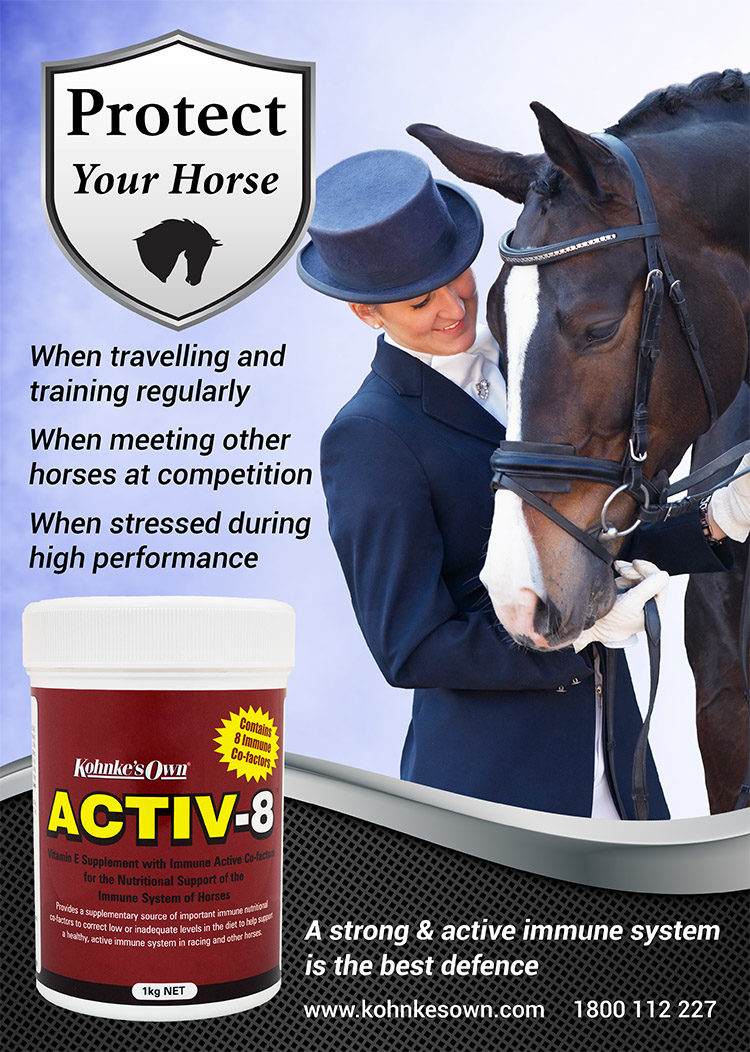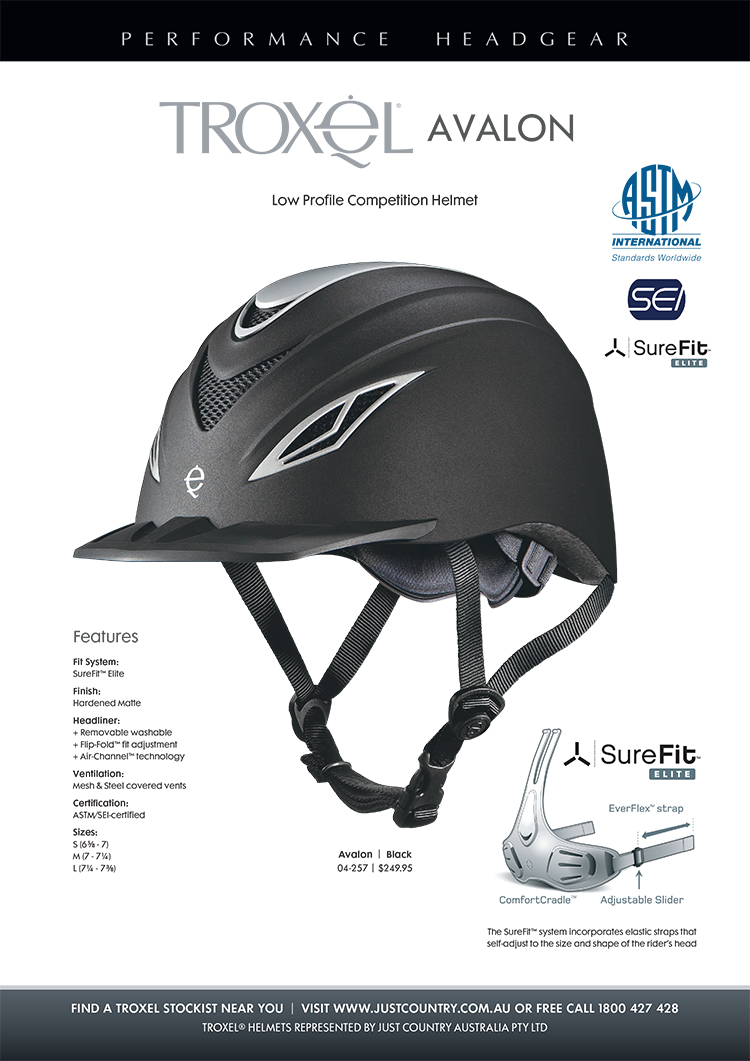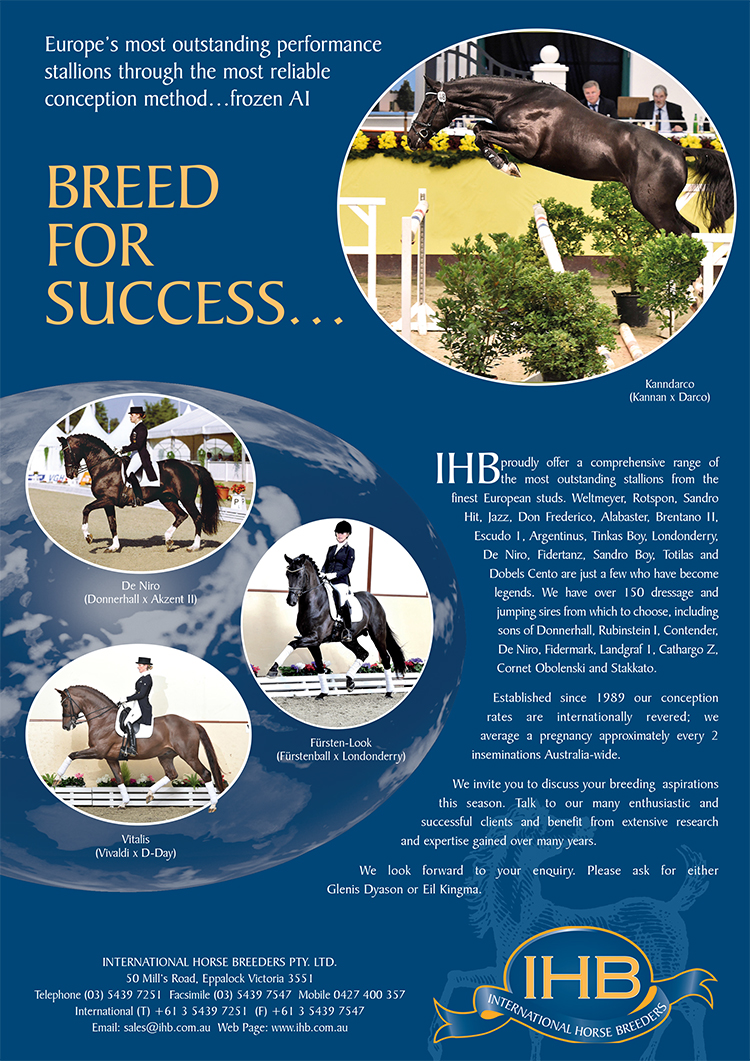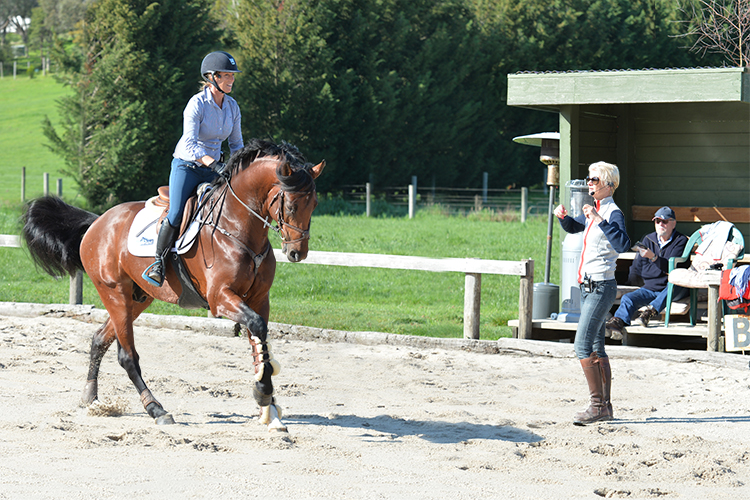 Story by Christopher Hector and photos by Roz Neave
Story by Christopher Hector and photos by Roz Neave
Michelle Strapp is just a joy to work with. Why? Because she has that rare ability to express the Eternal Truths of the Equestrian Art, minted new each time! It’s doubly a joy when her pupil is Caroline Price, since Caroline is the ideal student, focussed, intelligent and a very fine rider – even if it is difficult, she will try to do what Michelle asks, and 99 times out of a 100, she gets it right. Triple treat it is when the horse is the magnificent four-year-old Holsteiner, Calavino…
Being the serious student she is, Caroline is quite happy to talk about the problems she has encountered…
“He’s straightened up a lot, still a little bit of a right drift, he is stretching into the contact more, but the main thing is a tendency to bounce up and down, he gets behind my leg and then he gets spooky – he’s never done that before.”
And when Caroline asks Calavino to go forward, he goes up, quite spectacularly, she keeps her cool and pushes him on.
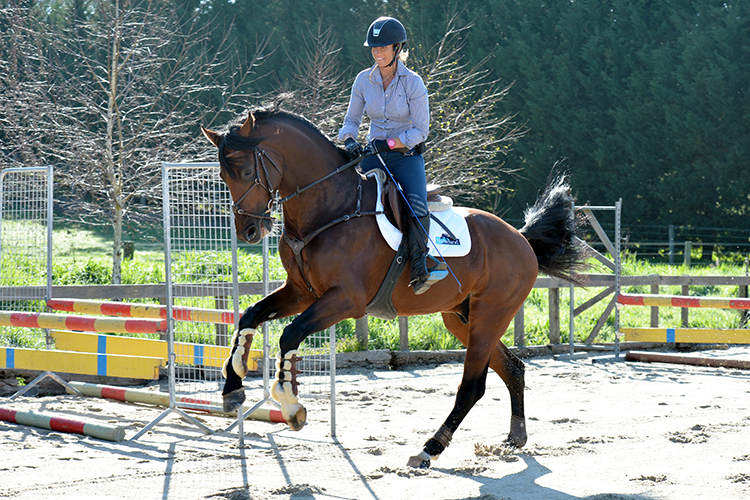
“You did sit that very well – he likes playing on my arena,” Michelle laughs. “I’d start cantering if I was you, just start going forward. He’s just being a child. The trouble with stallions is that they are more like children. It’s not vindictive, but the trouble with young horses, as you know, is that while it’s not vindictive, it can easily become a habit, everything is habit forming. He hasn’t got a bad bone in him, he is just having a really good time. This is all very exciting. He just loves life at the moment and you just happen to be his playmate. You just don’t want to play the same game, that’s all. The best thing you can do is just canter, to let the blood down. The worst thing you could do is start to bottle him up and pull him around and give him a hard time – no, use his energy in a positive way.”
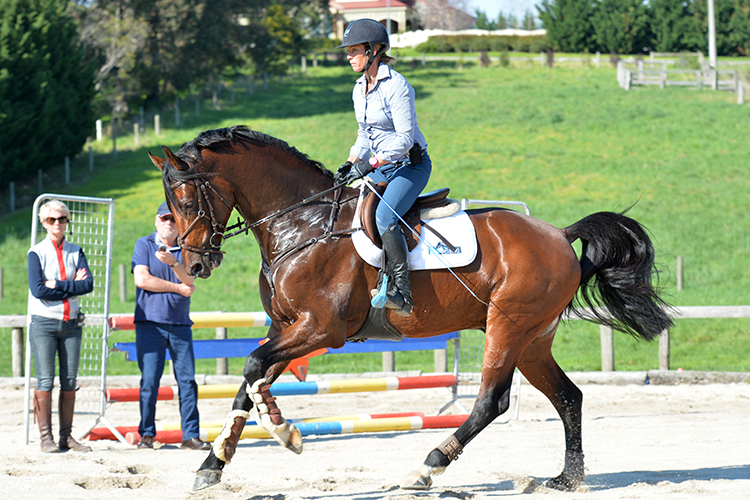
“The trouble is that they just spring, any young horse that is a good jumper can leave the ground on all four for whatever reason. When they are young, you just wait for it, without trying to be negative to them. All that swapping of leads is just an abundance of energy, just keep him going forward and don’t get too picky.”
more follows
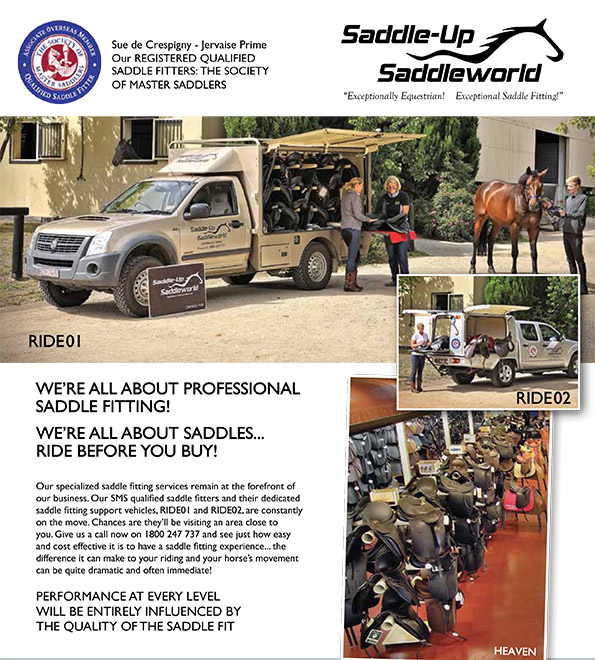
Visit the Saddle-Up Saddleworld stand at DJWTS and discuss your new saddle and have a free saddle fitting…
“It’s good to get him going inside the arena – the temptation would be to take him out on a track or something – but they do have to learn that they have to work. He doesn’t want to work, he’d rather play, and even though he is in canter, he still has to work in a confined arena. He still has to be prepared to come in and do his job, and get some work ethic and maturity about who he is.”
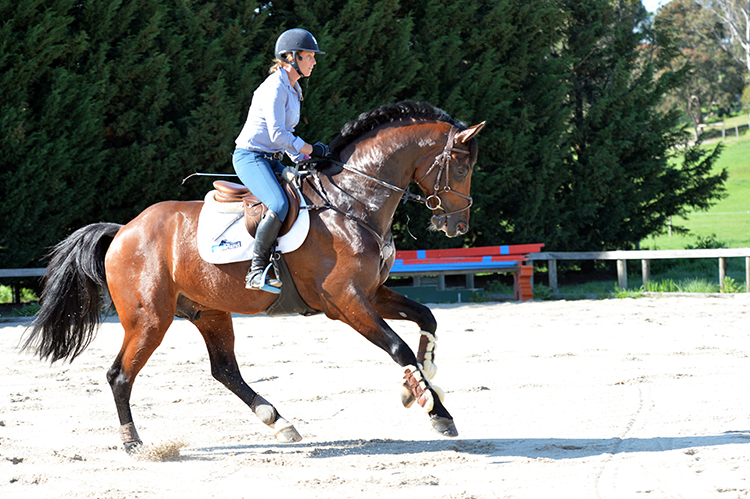
How is the lateral work going? Have you done leg yields?
“We’ve started.”
“He’s got to live in a lot of lateral work. He has such big movement, and even though he is taking rein, he is pushing himself down onto his front legs, that’s why he curls over. His movement is so good that is why he starts to curl and roll, he pushes himself there. Slow it all down, he’s a beautiful mover, but he just pushes himself onto his forehand. Slow right down and see if his brain is going to let us do this, and tuck his hindleg under himself. I’ll tell you what I want you to do, and you tell me if his brain is going to handle it.”
“Left hind tuck under, the bum goes to the right, and keep it there through the corner. Change rein and tuck the other way, then right leg yield. Just baby leg yields, working a little more from the back. You feel how his bum goes everywhere in the corners – just decide which leg you want to keep under you. If you get too much shoulder, get out of it, go straight again. His big shoulders go somewhere and his hind legs get left behind. Go straight now because he is going shoulder first. When you feel like the hind legs are not catching up to the shoulders, go straight again, and start again.”
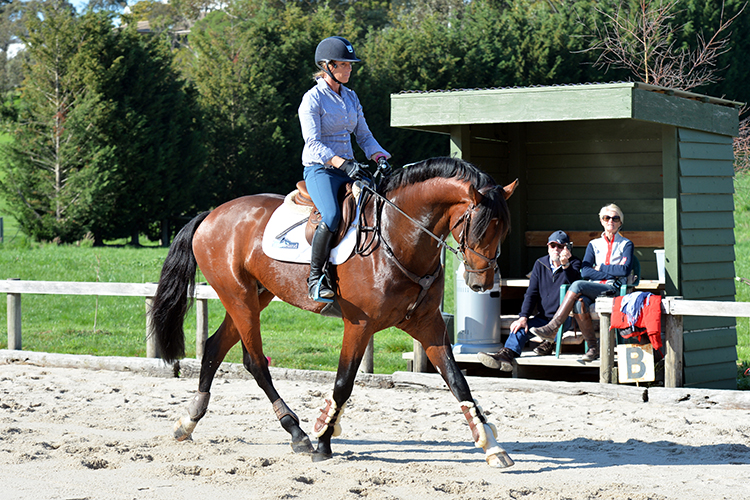
more follows
“Go straight, try again, left hind, now straight, try again, that’s better. Otherwise you are boxing him up, leg to hand, and creating tightness, trying to force the left hind leg into the right rein, which is putting left hind leg into a bulge, so then he is out of balance again. When you have so much movement and power, such big natural paces and power, he struggles with his own movement. You know you said to me that he bounces – sometimes the spook is behind the leg, but often when a horse bounces in the canter, it is when you go to collect or shorten, it is not necessarily that they are behind the leg, they just don’t know where to put their power, so they bounce it. They know they don’t want to run through the hand because you have taught them that.”
“Right hind, slow down, right hind, give him time to handle his movement, that’s better, you have started to open his frame a bit, beautiful, let go again, let go of the nose, super. Use the hind leg as your brake, he came in and he is a little bit wide behind – I know he is fresh – and he wants to push himself down. Every time you feel him rolling and dragging you down, you’ve got to think of how do I engage the hind leg and teach him how to sit? You can’t engage the hind leg by riding him more forward, because you will just end up with a powerhouse, running more onto his shoulders. Slow down, left hind, slow the shoulders again, give, give, give… Now it’s hard work for him, this is also good for his brain. When he didn’t understand to bring his hind leg under, rather than letting him drag you to the right with his shoulders, you are better off to walk and teach him a turn on the forehand.”
- more follows
“If when you walk and do a turn on the forehand, and he’s naughty and wants to go up, go forward to the trot – that’s just being smart. Now do a turn on the forehand, walk, no bendy neck, sit straighter, use the dressage whip next to his left hind. That’s it – I can’t tell you how important that is for him at the moment, that is how you are going to capture this power. It’s the same with his jumping, his power can work against you, he is just going to keep pushing at his bridle, then you will need more and more gear on to try and control the hind legs running into the shoulders, but the bit is not attached to the hind legs. That’s how you end up with other issues.”
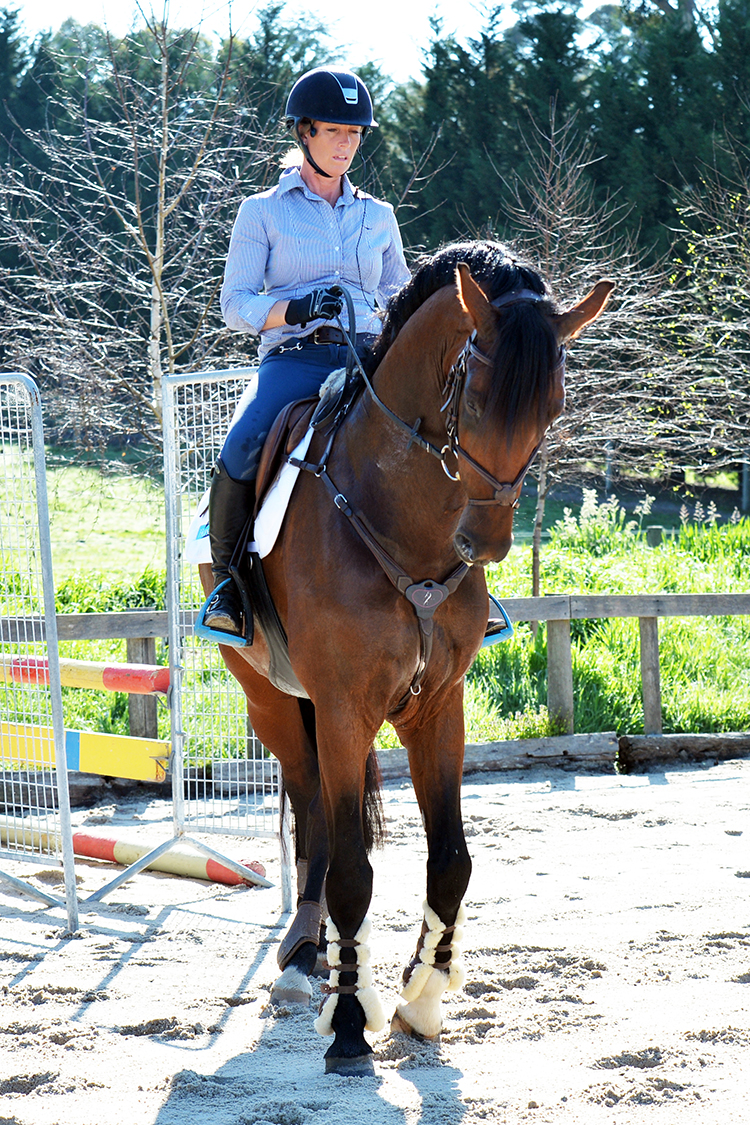
“What you’ve got to do is get as much control as you possibly can of those back legs, and the only way you are going to do that is if he understands the true meaning of when you put left leg on, it means he steps under with his left hind. When you put the right leg on, it means step under with the right hind. And that actually gets them in front of the leg, because they understand the true meaning of leg. The leg does not just mean go forward and gallop. For sure when a horse is spooky, two legs make a horse go forward, but if he only thinks of leg as power and forward, then you’ll end up with him running and out-powering his own balance and travelling croup high, and that’s why they bounce, because the croup has come up. I would give him lots of those exercises, but as soon as you feel the bulge, go straight. Ride straight to two equal reins.”
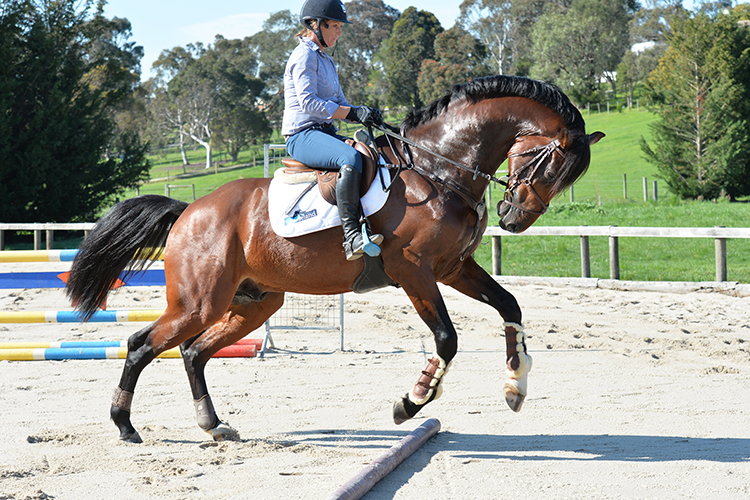
“The word forward can be misunderstood, too much power makes it very difficult for the horse to balance, which then creates a situation where the rider can over-dominate with their hands and position to control an unbalanced power house.”
More follows
“When you feel the shoulders bulge, don’t try and block the outside shoulder with only one hand, they end up with counter flexion, or a stiffness. Every time you feel your horse bulge, remember he is bulging with two shoulders not one. The correction of a bulge is an equal half halt to the two shoulders, two sides of his mouth. The whole time you are riding a young horse like this, it is about putting a better mouth on them, anything you do with your hand is about putting a better mouth on, it’s not about blocking shoulders – especially at this age. Everything we do with the horse goes to the hand, so the better mouth you put on, the better your horse is going to respond and move. The magic word is feel, just start being aware that anything that comes from the horse’s engine, for whatever reason, ends up in your hands, and at that point you have an important role to fulfill with your hands.”
“If you put left leg on, and he’s bulging to the right, and you go don’t bulge, don’t bulge, with a tight, stiff and hard right rein, then you are putting on a harder mouth and tight neck, because you’ve just got the left leg fighting against the right hand. Half halt with two reins, teach him to trust your hand and wait, while you give his left leg time to catch up. His shoulders are falling out because her is out of balance and running. Let’s have a look at the canter.”
“I think he is starting to realise that these fences can bite. They are a bit naïve in the beginning, and suddenly they realise these jumps could actually bite them. If they are careful then they start to become more looky, they go through that stage.”
We are saying ‘bite them’ because they knock the rails, not that the rails jump up and bite them, as happens in some training establishments…
“No, no, they think they bite them because they knock them down, we don’t actually do biting rails here, not at all, we sack the ones that need biting rails.”
“Now I want a half volté into counter canter. Have you done that?”
I’ve been trying, can’t say I’ve been successful…
“Go straight, half volté into counter canter. Control the outside shoulder with your half halts – the stallion tosses off a flying change – his changes are too good. This is really important for him. Keep your left leg (the outside one) back, keep his weight to the right, too much left flexion as you are turning right, right flexion a little, you’ve got to get stronger in your position to keep his weight right, keep the neck straighter, outside leg further back, and push him to the fence, even if he changes keep his weight to the right, just because he changes, don’t throw his weight left, keep the weight to the right. Much better, when he changes you just let him flip you about – this is all mental discipline for him also, but it is not only mental discipline, it is everything his canter needs.”
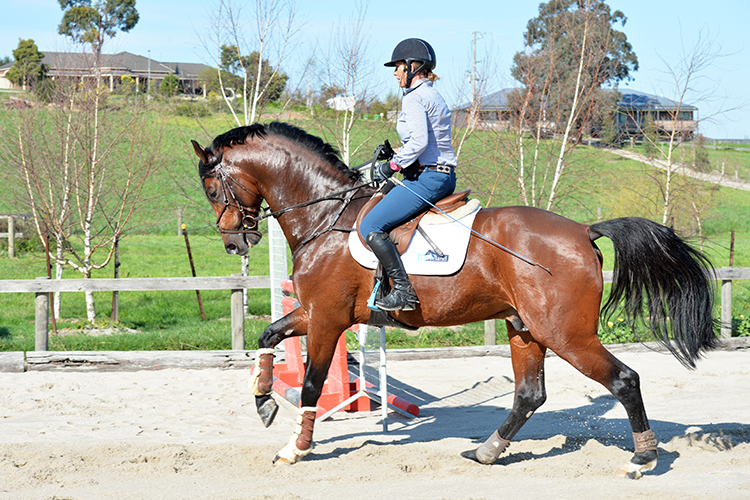
“Go straight up this long side and we’ll do it again. Set up your arena so you can train the counter canter. If he changes, keep the body weight where you want it, as if he is still in counter canter, because it is more a mental state for him – that he stays on your aids. Keep his weight to the left, keep your right leg back, back – you need to have hold of the quarters better. Go straight, right flexion with the right volté not left flexion, put his bum towards me, right, quarters to me, left leg back, beautiful, keep it there. Keep it there, super. If he changes, don’t twist.”
“If he is green and he has done counter canter really well, and you can feel that you are not going to hold the counter canter, do a trot transition with a tuck, tuck his back legs and get a little leg yield. When he learns counter canter better and he feels like a playboy, you’ll be able to hold the counter canter, which gets his head. All of this gets the head, half of training is brainwashing. In the end they think it’s their idea, because the work becomes very easy.”
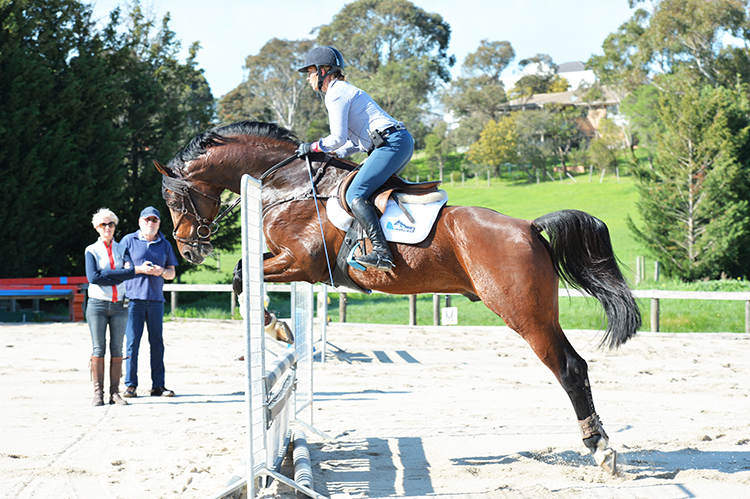
“Let’s go jump a few fences…”
“You’ve been starting him just over a little cross rail?” Yes. “Feel the difference in the canter after the counter canter? If you have to over leg him to get him going where you want him, then you are going to send too much power to your hand, this can also tighten the jump , so he is going to balloon more than you want, because you’ve got too much power coming at the distance, and the balloon sends you up. I would really spend some time to capture the counter canter, make it a priority, so that you can counter canter this horse where-ever you want. Don’t fight, just ask until he starts to sit – it’s in counter canter that you will teach him to lengthen and shorten. It will change the way you can ride a fence.”
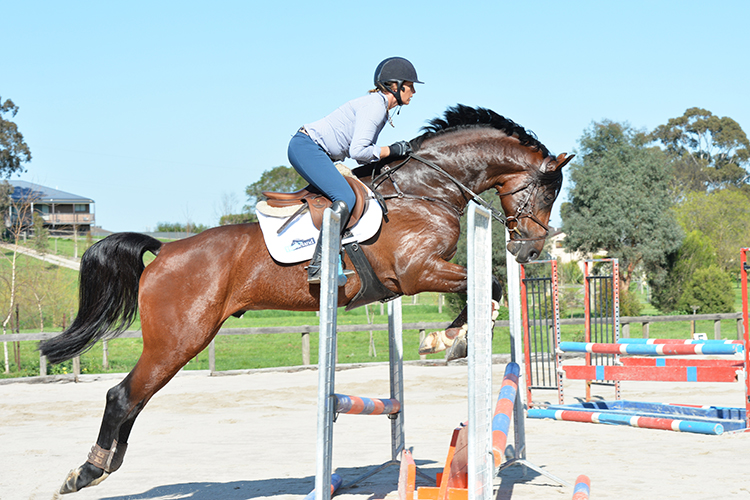 “Sometimes you feel when you jump these powerhouses, their power pushes you closer to the take off distance than you wanted, and then they tend to throw themselves up off the floor, a little bit short in the neck, and tighten the back end up. They are not quiet enough within their pace to give themselves time to use themselves. In the counter canter before, you saw how his footfall was quieter, it slows the power down a little bit, and that allows you to get softer fences. Find exercises to teach the horse to contain, find an exercise that helps to put him into that position so he actually comprehends what we are trying to do – otherwise he has no idea what we are trying to do with him. We put them in a box with no windows, and that’s why they bounce, or become mouthy. What we’ve got to try and do is use exercises that put their body where we want their body.”
“Sometimes you feel when you jump these powerhouses, their power pushes you closer to the take off distance than you wanted, and then they tend to throw themselves up off the floor, a little bit short in the neck, and tighten the back end up. They are not quiet enough within their pace to give themselves time to use themselves. In the counter canter before, you saw how his footfall was quieter, it slows the power down a little bit, and that allows you to get softer fences. Find exercises to teach the horse to contain, find an exercise that helps to put him into that position so he actually comprehends what we are trying to do – otherwise he has no idea what we are trying to do with him. We put them in a box with no windows, and that’s why they bounce, or become mouthy. What we’ve got to try and do is use exercises that put their body where we want their body.”
“Nice over the jump, very simple, keep going, half volté, counter canter as long as you can, back to M, simple change or flying change. Do it again, but you have to get your outside leg a bit further back, and take more control of the hindquarters, so you can control the counter canter. Left leg back further, put it back, put it back further – Yes! You actually have a left leg, beautiful.”
“It’s just skills, I’m not making you into a dressage rider, it’s just skills, you have a big beautiful horse, you need the skills. That’s better, you are sitting better. Trot there (before you lose the counter canter), AAH too late, get the transition before he gets into trouble, help him, get him before he is out of balance. You have a ten out of ten position over a jump, but when you are riding these horses with powerful paces, your lower leg has to get further back to be able to control the whole horse. When you get your leg back you look like you are actually wrapped around him, otherwise your leg is just riding the front two corners and that’s why when you do the turn back, you create too much flexion, outside flexion, trying to pull him around. If you do a turn back to the right, you shouldn’t be tightening up the left rein to come round. Think about the half halt, it’s leg to your hand when you are turning like that, the leg rides the turn into what you want to feel in the front. If the turning point is just your hands, then you are only turning the front wheel and the back wheels are out of control. Just keep him in your chute.”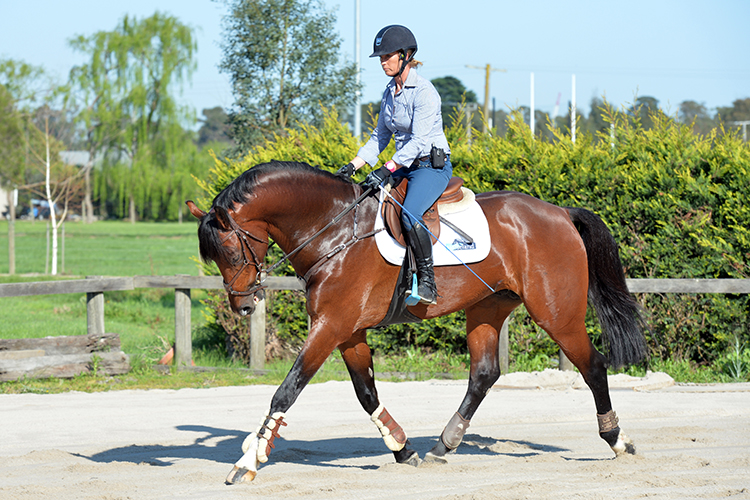
“Finish with some turns on the forehand, push the hind leg under and keep coming forward, make him quicker from the leg, and forward and out of it, yes, the second he rolls and wants to curl, ride him forward. Think when you rider forward, not to rush the beat of the walk. I would rather not see you do full turns on the forehand this horse, just one step, but forward and under. Always think to ride the hind leg under, with forward thinking to both reins. No twisting with the body or pulling one rein.
“He’s got so much buoyancy, that’s why you’ve got to help him on the flat. It is not going to be fixed by jumping, you’ve got to build his strength on the flat, help him on the flat so he sits better, and when he lands, he’ll be able to handle his own spring. You know he is a good jumper, now it is taking him back a little to the drawing board and get more control of his balance, before he goes up, otherwise you’ll be jumping through the rafters and not being able to control all this power.”
“The word forward can be misunderstood, too much power makes it very difficult for the horse to balance, which then creates the rider to be over-dominating with their hands and position to control an unbalanced powerhouse.”



